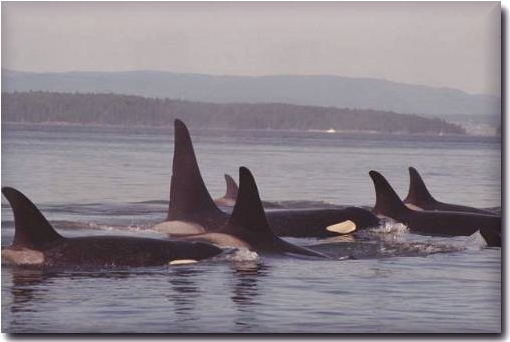

A premier tourist destination Victoria is regarded as one of the premier tourist destinations of the world due to its natural beauty and exceptional environment. Surveys have consistently ranked Victoria as one of the top ten favored tourist destinations on the globe. Tourism to Victoria is now approximately 3.6 million visitors p.a. according to recently published Tourism Victoria statistics. Until quite recently Butchart Gardens has been the only unique tourist draw to our city. All other tourist attractions are somewhat generic in nature and may be found in most other cities of the world. Tourists repeatedly cite Butchart Gardens and Victoria's natural beauty as creating the most significant lasting impressions.
During the last few years the eco-tour industry (with whale watching being the primary focus) has sprung from a zero base to become a significant tourist draw in Victoria. It is now fast becoming one of the most significant whale watching destinations in the world. This new industry provides a whale watching experience unparalleled elsewhere in the world due to five extremely significant factors:
The departure point (Inner Harbor) is within easy
access of the concentration of tourist activity. Almost all tourists
to Victoria do the "walk-about" from the Empress Hotel and the Causeway
to Government Street and Wharf Street.
The location of cetaceans is very predictable
during summer months in a geographic area well within the scope of a three
hour excursion from Victoria's inner harbor.
Sightings of Orca (Killer Whales) may be the primary objective during the approximate three hour long whale watching safaris from the Inner Harbor of Victoria, but several other points of interest are all within easy range. The sea-lion population at Race Rocks, many harbor seals, bald eagle nests, the abundant cormorant population and other sea birds of interest, porpoises and baleen whales all contribute to round out the total eco tour.
The relative safety of our local waters (Strait of Juan de Fuca and the Haro Strait) due to protection from large offshore swells.
The exceptional beauty of the natural surroundings,
not only of the departure point (The Inner Harbor), but also the vista
of the snow-capped peaks of the Olympic Range, Mount Baker, and of course
the pristine appearance of our natural shoreline and many local islands.
Explosion in popularity...
Whale watching is a phenomena that has exploded
in popularity during the last few years. It really doesn't
matter whether you are young or old, the fascination appears to be just
as intense. Only one close up encounter with a whale will change
your life forever!
Whale watching started in Europe and in the U.S.A. from a zero base in the mid fifties. It was not until 20 years ago however that the general population became aware of, or interested in the possibility of seeing whales in the wild. Since the early seventies when the "Save the Whales" movement began, people have become increasingly aware of, and concerned about the welfare of the world's cetaceans. Whale watching has grown locally since about 1980 in Johnstone Strait with the northern resident pods of Vancouver Island, and since 1984 in the Haro Strait area with the southern local resident pods.
The dozens of killer whales (Orcinus Orca) taken into captivity during the sixties and seventies and put on public display in aquariums around the globe intensified public awareness of the plight of whales. This, coupled with extensive television coverage, especially in documentary form has contributed to the phenomenal public interest in cetaceans, killer whales in particular.
One result is the desire by the public to see these mammals in their natural setting and the marine eco-tour and whale watching industry has thus grown in leaps and bounds. The Pacific Northwest's Haro and Juan de Fuca Strait is a particularly good viewing destination due to the abundance and predictability of the southern resident pods of killer whales, numbering almost 100 animals.